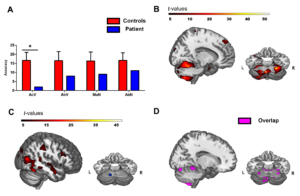The cerebellum and embodied semantics: evidence from a case of genetic ataxia due to STUB1 mutations
Journal of Medical Genetics
García, A. M., Abrevaya, S., Kozono, G., García Cordero, I., Córdoba, M., Kauffman, M. A., Pautassi, R., Muñoz, E., Sedeño, L. & Ibáñez, A. (2017). The cerebellum and embodied semantics: Evidence from a case of genetic ataxia due to STUB1 mutations. Journal of Medical Genetics 54, 114-124. Online: http://bit.ly/2eGEaxw.
Reportamos un caso de ataxia genética con una mutación nueva y mostramos que la atrofia del cerebelo y su afectación de la conectividad funcional se asocian con déficits selectivos en verbos de acción. El patrón de atrofia coincidió con los sitios de expresión del gen afectado (STUB1). Así, brindamos la primera evidencia de relación entre genética, atrofia cerebelosa y redes involucradas en el lenguaje de acción.
Para acceder al artículo completo hacé click AQUÍ
The cerebellum and embodied semantics: evidence from a case of genetic ataxia due to STUB1 mutations
Journal of Medical Genetics
García, A. M., Abrevaya, S., Kozono, G., García Cordero, I., Córdoba, M., Kauffman, M. A., Pautassi, R., Muñoz, E., Sedeño, L. & Ibáñez, A. (2017). The cerebellum and embodied semantics: Evidence from a case of genetic ataxia due to STUB1 mutations. Journal of Medical Genetics 54, 114-124. Online: http://bit.ly/2eGEaxw.
Abundant research on lexicosemantic processing indicates that damage to movement-related regions (the motor and premotor cortices, Broca´s area and the basal ganglia1) distinctively impairs processing of action verbs, that is, verbs denoting bodily motion. Moreover, such deficits could be hereditary,2 suggesting an association with genetic factors. We, thus, hypothesised that genetically based deterioration of other motor regions could involve similar impairments. In particular, through a combination of structural and functional MRI (fMRI) with genetic and behavioural analysis, this case study indicates that distinctive action-verb deficits can also be linked to genetic mutations affecting the cerebellum, a key motor hub implicated in balance, posture and movement coordination. Accordingly, in line with the embodied cognition framework, our data illuminate a potential functional specialisation of the cerebellum within the lexicosemantic domain.To test our hypothesis, we profited from access to a unique case of genetic ataxia and assessed action-verb processing together with cerebellar atrophy and related functional connectivity. The patient is a 26-year-old, Spanish-speaking male, with 13 years of education and a normal score (26/30) on the Montreal Cognitive Assessment (MoCA). He was diagnosed with cerebellar ataxia plus myoclonus, and exome sequencing revealed novel compound heterozygous mutations in the STUB1 gene3 (see online supplementary appendix e-1). His condition is characterised by severe dysarthria, action and postural tremor in the upper limbs, abnormalities of manual and facial movements and progressive disturbances of balance and gait.
To access the full paper please click HERE



